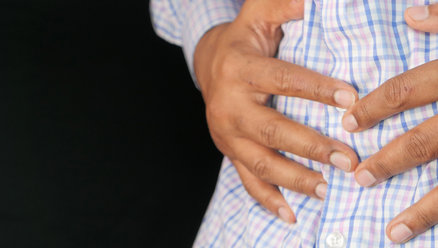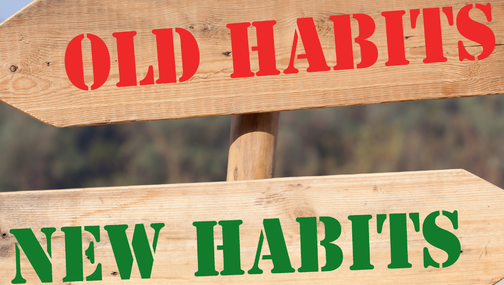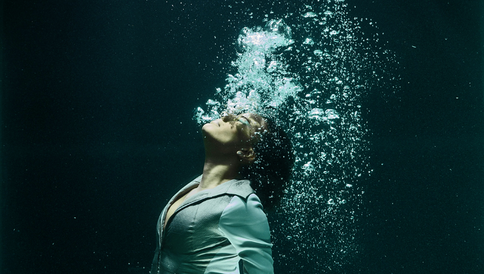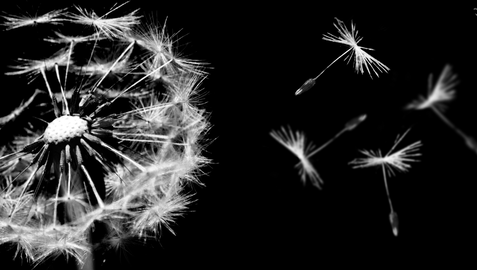|
If you know anything about me yet, it is that I'm a lover of Pranayama or yogic breathing. As many posts as I have written about the benefits of Pranayama and how to actually perform various types of Pranayama, I don't think I have ever laid out the basics. The word Pranayama is a Sanskrit compound and it has been defined in numerous ways by different authors/commentators/etc.
I personally view Pranayama as the expansion of the breath and individual energy (life force) into the larger interconnected cosmic universe. When we work with our breath, we gain access to our life force energy. Pranayama is the access point to the subtler aspects of yoga as well as being tremendously helpful in developing body awareness, mindfulness, focus and stamina. Mainstream society is now discovering the benefits of pranayama, or yogic breathing exercises. The various types of Pranayama are accessible to the most beginner students, even those whose physical impairments and injuries prevent most asanas (yoga postures). Whether you are a beginner or advanced yogi, you will find Pranayama to be a powerful tool to help you on your yogic journey. How to Practice Pranayama 1. Clothing: Clothing should be loose, especially around the abdomen, to ensure the diaphragm is not impeded. 2. Diet: Do not eat heavy meals at least 2-3 hours prior to practicing Pranayama. 3. Time: Dawn is a terrific time to practice yoga and meditation as well as Pranayama because the early morning air is fresh and contains the most amount of Prana (life force). Of course, if this is not feasible, no worries, practice when you can. 4. Posture: Always sit with your back as straight if possible. In addition, keep the chin slightly tucked so that the back of the neck is aligned with the spine. This will help the flow of energy up and down the spine. 5. Illness: Do not practice any advanced Pranayama techniques while ill. Do the easier breathing exercises. It is also fine to stop entirely until you have recovered fully. 6. Effort: Do not strain. Progression should be gentle and systematic. This is even more applicable for any Pranayama that requires you to hold your breath for prolonged periods. If you feel uncomfortable while practicing a Pranayama, stop, take a break and restart again when you feel ready. 7. Cautions: Do not practice any heat generating Pranayama while sitting directly in the sun. This can aggravate the heat in the system (pitta). Similarly, choose Pranayama according to physical conditions and state of your health. 8. Location: Try to practice in a well-ventilated room with plenty of fresh air. How will you practice your Pranayama today? Do you have any helpful tips that make your Pranayama practice more consistent? "There is a vitality, a life force, an energy, a quickening that is translated through you into action, and because there is only one of you in all of time, this expression is unique. "-Martha Graham
0 Comments
There are several types of breathing that can be unhealthy. Yoga, as we all know, can help us break these habits. Yoga can retrain our brain and body to get us off the hamster wheel of the most common unhelpful breathing practices: hyperventilation, reverse breathing, collapsed breathing and frozen breathing. Hyperventilation is the act of breathing quickly no matter what we are doing. It’s not just when we are scared, frighted or upset like in the movies. It can be a breathing pattern we do continually every minute of every day. In hyperventilation, you will chest breath and only partially contract the diaphragm. Thus, reducing the space the lungs have to expand. This results in you having to increase the number of breaths per minute to get enough oxygen and, ultimately, increases the amount of carbon dioxide lost on the exhale making the body too alkaline. Hyperventilation makes the arteries in the brain constrict causing headaches and problems with concentration. Also due to the reduced oxygen levels, the blood’s hemoglobin does not release oxygen to the cells (causing dizziness, and breathlessness) and perpetuates the hyperventilation pattern. Additionally, hyperventilation causes constriction of the arteries reducing blood flow to the extremities, increases calcium levels causing muscle tension, and increases the excitability of the nervous system causing irritability, overreacting, and inappropriate responses. It has also been documented that hyperventilation causes nightmares, insomnia, visual disturbances, anxiety, and muscle cramps, just to name a few. Reverse breathing is when your abdomen moves ‘in” on the inhale and moves “out” on the exhale. Your pelvic floor movement is also reversed meaning the pelvic floor “closes” (rises) on the inhale and “opens” (lowers) on the exhale. The reversal can cause chronic tension in your upper body including the neck, shoulders and jaw areas. Reverse breathing also causes indigestion, heartburn, bloating, and flatulence due to the abdomen never fully relaxing at any stage of breathing. Collapsed breathing is chest breathing with your whole body moving downward. Your chest draws downward, your shoulders are hunched protectively, and your belly is projected forward and down. Typically, collapsed breathers have little tone in their lower body (muscles and organs) with the heart and lungs resting down on their belly. While breathing, your belly will remain static, and your chest and shoulders rise up and down slightly. Finally, frozen breathing is when the entire outer layer of your body contracts. This contraction suppresses the natural movement of your breath. Very little movement is seen on the surface of the body in frozen breathing. Your shoulders will typically draw toward each other, and you will hold your breath. What To Do... A yoga practice that can address all four breathing challenges is to lay on the floor in a supine position and start to notice where you breath. Donna Farhi’s “Where Do I Breathe?” practice is an excellent method to begin the learn exactly where in the body you are breathing and to become more aware or mindful of those breathing patterns. Here's how to start (for more in-depth exploration I recommend Farhi's The Breathing Book):
After you develop this awareness, you can try three-part breathing to access all the parts of your lungs. Three-part breathing can also start in a supine position so you can focus on the breathing aspects and not on having good posture.
Once you feel comfortable supine, you can try three-part breathing in a seated position with more focus on posture to prevent collapsing of the shoulders and chest. Additionally, you can incorporate a guided visualization to help cultivate mindful breathing, the slowing down of the breath, and a deepening of the inhales. Likewise, you may want to try a meditation practice on loving-kindness or ahimsa to address any unresolved mental or spiritual traumas that may be leading to poor breathing habits. Farhi, D. (1996). The Breathing Book: Good Health and Vitality Through Essential Breath Work. St. Martin's Griffin, New York. "A habit cannot be tossed out the window; it must be coaxed down the stairs a step at a time."-Mark Twain According to the Journal of the American Medical Association, it is estimated that 60 to 80 percent of visits to the doctor are stress-related but rarely do doctors talk to their patients about how to reduce stress. This statistic really hit home for me recently. My dad just had a triple by-pass at 81 years old. You want to talk about my stress levels shooting out of the roof-HOLY SMOKES!!! By his fifth day in ICU, I came home and collapsed on my couch at which point my husband said, “What’s wrong with you? Why are you breathing that way?” To be honest, I hadn’t even noticed how I was breathing. So, I paused and said, “Just relieving some stress.” In reality and totally subconsciously, I was doing Ujjayi breathing (aka "ocean breath"). From all my years of being a yogi, I naturally defaulted to breathing to reduce my stress. A fundamental principle of yoga is that our body and mind are connected. Breathing is key to this connection with your body. Yogic breathing also trains your parasympathetic nervous system. It helps your stress hormone levels to drop and your heart rate variability to increase (a measure of your ability to tolerate stress). The Next Time You Feel Stressed Try Ujjayi Breathing for Yourself Take a deep slow breath through your nose and exhale through your nose while constricting the back of your throat (keep your mouth closed). Your breath will probably be loud enough that you can hear it and will sound like the waves of the ocean or like Darth Vader from Star Wars. |
Kelley GallopI AM Boundless Bliss Yoga. Just me. I'm a one-lady band. I'm a yoga therapist. I didn't start out to be a yoga therapist, I just wanted to learn more and SHAAAZZAMM...here I am. Archives
September 2021
Categories
All
|








 RSS Feed
RSS Feed